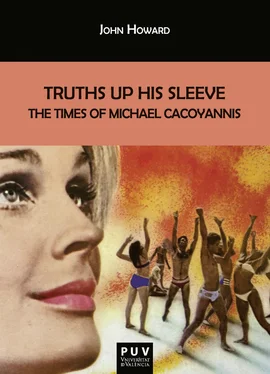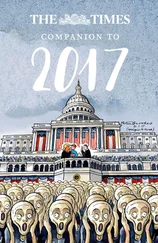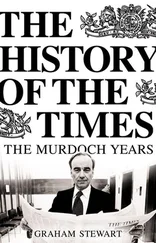PART I
WILLFUL COMING OF AGE
CHAPTER 1
Colonial Family Portraits
In April 1928, ten people filed into a professional photographic studio, ready to be visually recorded for posterity. The only man among them took charge, as was customary. He described the special occasion to the photographer, agreed the price, then attempted to stage-manage the entire affair. However, the photographer had ideas all his own. As did the man’s mother-in-law. The result was a family portrait of extraordinary complexity. Now, almost a hundred years later—fully two centuries after photography’s invention—the image remains captivating, due in part to its unique composition, but foremost for its unabashed star. 1
Among the three generations on hand, mother-in-law Zoe, by far the eldest, had the most experience of portrait sittings. And sit she did. Age 63, she at once spotted the large chair, and her daughters guided her into it. Then the photographer placed the four daughters improbably along the back row standing. At opposite ends of the row, he situated the youngest of them: identical twins in matching outfits, each with long pearl strand knotted at the neck. Between the twins were the two older sisters. One stood out.
By most accounts, Angeliki was a gracious woman of refined tastes and impeccable courtesy. Though she never finished high school—compelled to marry this imposing man instead—she could converse with the highest officials and the “lowliest” farm folk with equal ease. Apart from her tendency to overspend, she managed her household activities and social gatherings with great care. Indeed, this year she had noted the happy coincidence of two big events in mid-April. Consulting her husband, she decided to take advantage of it, and she booked this appointment with the Armenian photo-entrepreneur. 2
Though the family was “not religious,” they nonetheless attended annual Easter services, often in new clothes purchased for the purpose. After all, they considered this spring ritual more of “a social thing.” So the ten relatives had arrived at the studio well dressed in fashionable garments and accessories, led by the aspiring patriarch in three-piece suit and necktie. The four sisters sported trendy roaring-twenties bob haircuts, even as their mother had pinned an heirloom broach at her neckline and now clutched a purse in her lap. Furthermore, Zoe was layered in black, as expected of all widows. Everyone else wore lighter colors appropriate to the season. Also, because this year Easter Sunday fell during the same week as Angeliki’s birthday, her husband and children had surprised her with a colorful gift corsage. 3
Affixed high on her jacket, near her left shoulder, Angeliki’s birthday corsage featured at least three flowers, perhaps four. As Mother’s Day also was observed in spring, the four blooms might have been chosen to signify her four children, now waiting impatiently for their assigned positions. But first, of course, there was the matter of their father. As Zoe had commandeered the chair, the photographer gamely placed a piano bench at a slight angle to it. He coaxed Angeliki’s husband onto it and convinced him to hold their two younger children in his arms. Now the photographer only needed to arrange the two older children to complete the third generation and fix the tableau—the colonial family that is the subject of this book’s first chapter.
The photographer was meticulous, pride in his art evidenced by the studio props on display. Under the light-hued rectangular rug was yet another: a larger ornate Persian carpet. A tall decorative vase stood in the rear left corner. Paneled walls at right and left, with prominent dark baseboards, yielded diagonal lines creating the illusion of deep space. That illusion was continued on the photographer’s painted backdrop, which included candelabra seemingly fixed to the wall, plus curtains falling behind them and sweeping upward from left to top center. In right and left corners, actual fabrics were draped from ceiling to floor, framing and enhancing the trompe l’oeil.
However deep, the studio proper was more than wide enough to accommodate the two remaining children at either end of the front row. In her pleated dress, matching hair ribbon, and elegant lace-up boots, the older girl gravitated to her grandmother Zoe’s side, leaning against the chair, at right. But the older boy proved much more determined than his exasperated father, even more determined than the studio portraitist himself. Refusing to stand at left, Michael insisted on being front and center.
Aggravating the father’s anxieties about his fey son, Michael got down on the rug and reclined on it. Ever the showboat, he supported himself with his right arm, as his left arm rested along the left side of his body, left hand at his bare knees. In shorts and sweater, he stretched out his legs, which extended into long socks and patent leather shoes with ankle straps. Thus did Zoe’s grandson unfurl himself across the foreground of the family portrait.
Across nearly a century, from their time to ours, Michael gave us his best Greta Garbo pose.
British Colony, Cypriot Clan
For any school kid who ever gazed up at a world map and noticed South America and Africa fit together like pieces of a gigantic jigsaw puzzle, plate tectonics are easy to grasp. The earth’s landmasses seem to have split at the seams millions of years ago, continents ever-so-slowly drifting apart to their current stations—never mind what priests intone about god’s creation a few thousand years back. On a smaller scale, the eastern Mediterranean island of Cyprus formed a snug fit, an obvious earlier component, of Asia Minor, Anatolia, Middle East, or Western Asia. Nevertheless European powers again and again have claimed it, overtaken it, and controlled it, going back to crusading Richard the Lionheart and much earlier. For subsequent generations, aligning a family with a particular colonizing power constituted many a patriarch’s civic duty—or difficult decision of defiance.
The sunny coastlines of Cyprus and Turkey are separated by a mere 40 miles of water. By contrast the Cypriot capital of Nicosia is well over 500 miles from Athens, 2000 miles from London. Even so, Greek-and English-language accounts of the Cypriot past inevitably refer to Turks as invaders. Such is the course of empire, and such are the distortions of history written by the winners. Meanwhile, to this day, the United Kingdom owns two impressive chunks of prime beachfront real estate with lovely views to the south, overlaid with vast expanses of concrete—that is, runways, docks, and support structures. These military base areas are known as Akrotiri and Dhekelia, where the Union Jack still is raised and lowered to the strains of “God Save The Queen.” These royal realms are situated, no accident, adjacent to the thriving port cities of Limassol and Larnaca, now international tourist hotspots. 4
In terms of landmass and population, Cyprus is small, belying the enormous strategic importance of its location, at the intersection of Mediterranean Sea lanes connecting East and West, global North and global South. It has strong prehistoric ties to the continents of Africa, Asia, and Europe. From early humans to the present day, Cyprus has experienced a staggering number of colonizations. Beginning around 9000 BCE, hunter-gatherers on the island were joined by farmer-herders from the Fertile Crescent—specifically, today’s Syria—who raised wheat, sheep, and goats. Over time, these early settlers were followed by colonizers from Greece, Egypt, Iran, Lebanon, and Rome. Christians reached the island in the first century CE; Jews were expelled in the second; Muslims arrived in the seventh. After twelfth and thirteenth century religious wars staked various claims on “holy” land—killing around two million people—Venice, Turkey, then Great Britain colonized Cyprus. Since Venetians deforested the island to build their naval and commercial fleets, Turkey and Britain shored up agriculture and fisheries, as well as their own military garrisons. Not until 1960 did local leaders declare Cyprus an independent nation-state. However, many considered it an ethnarchy if not theocracy, since the first president was archbishop of the orthodox Church of Cyprus. He ruled—with brief albeit important exceptions—until 1977. 5
Читать дальше











